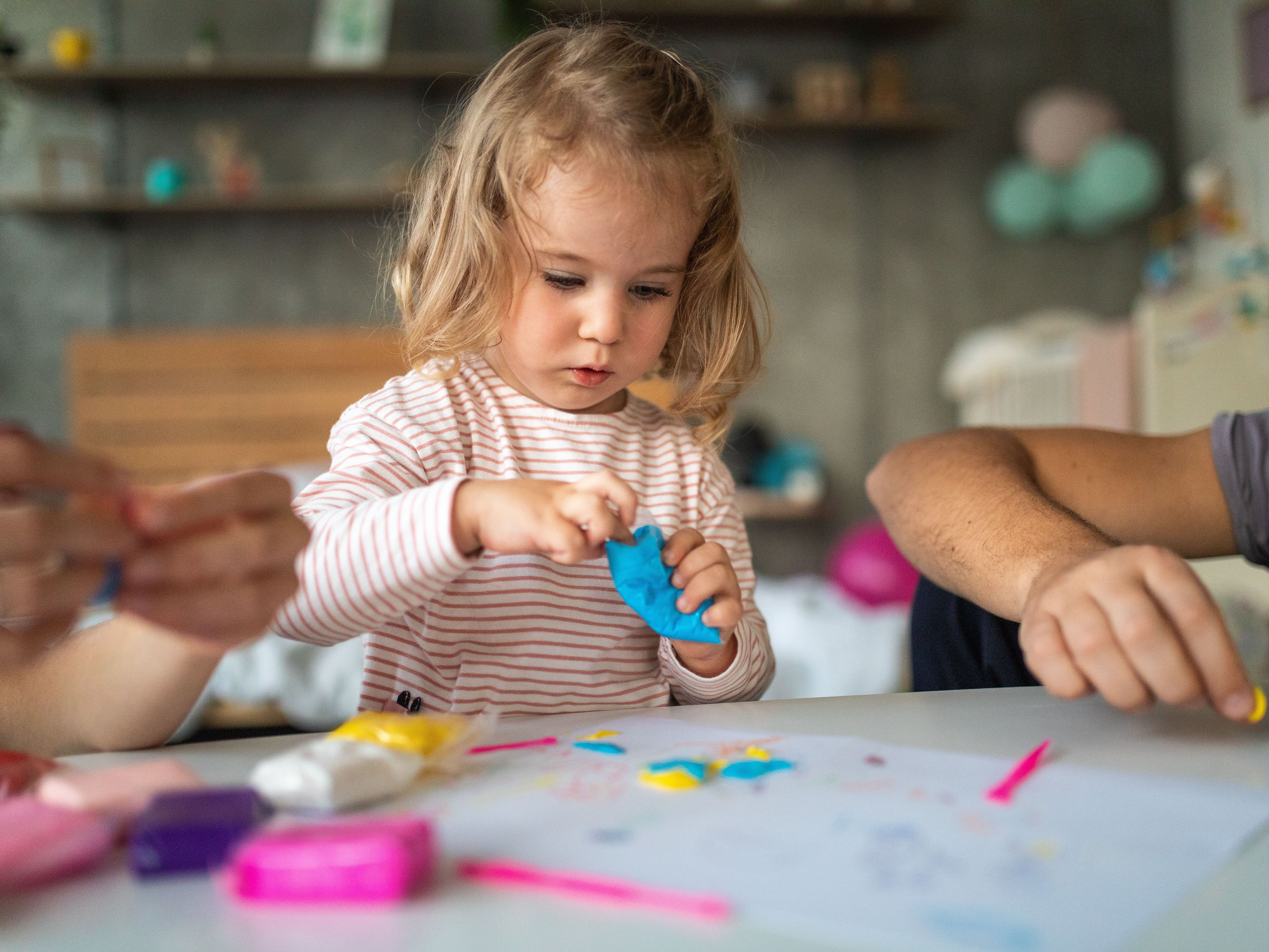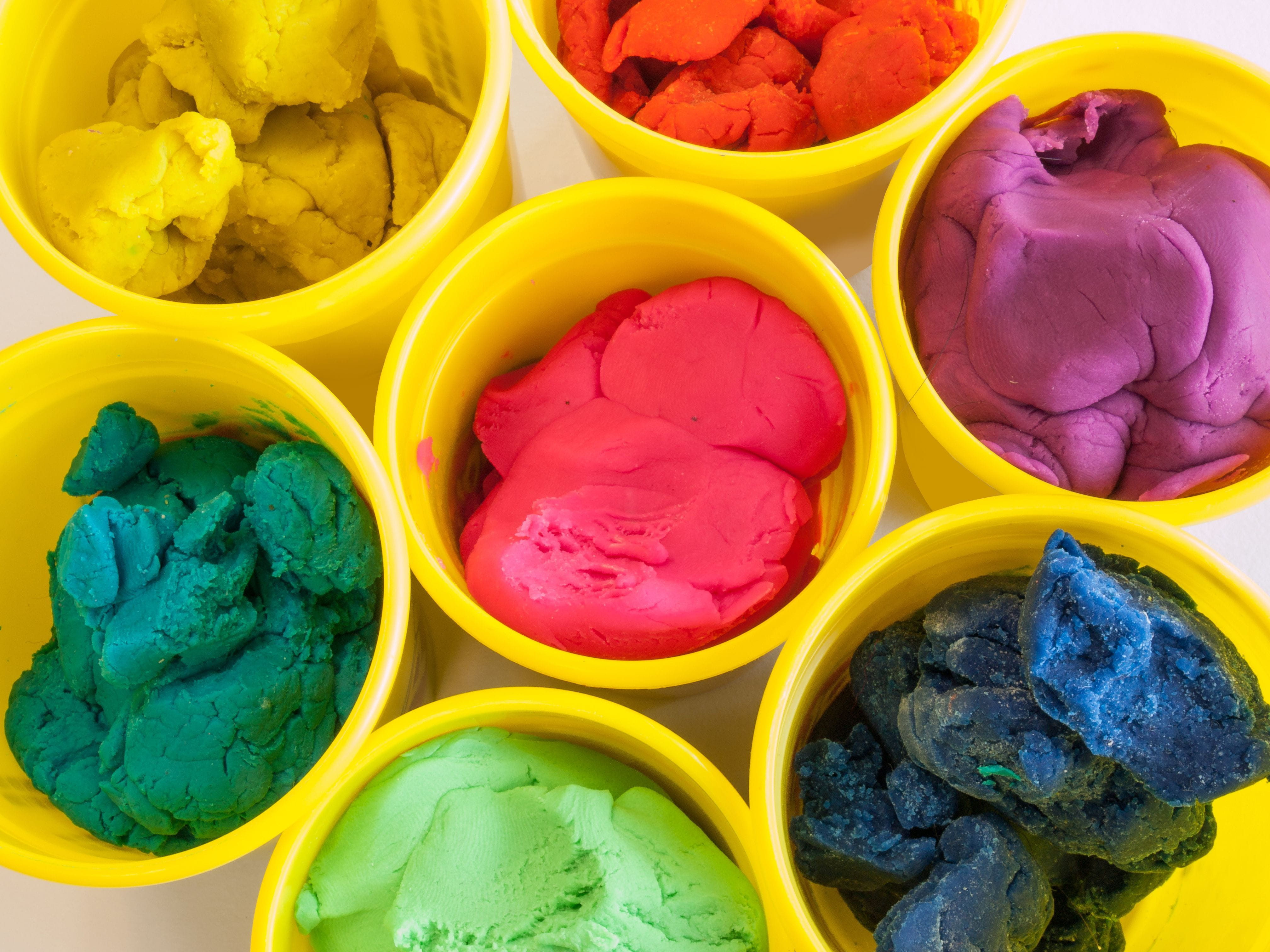Is Play-Doh Edible?

The Bottom Line
Play-Doh is a reusable modeling product made mostly of water, salt, and flour. It is not toxic. However, if a large amount is swallowed, it may cause a mild upset stomach. It may also be a choking hazard in young children. Rarely, contact dermatitis may occur. Since it contains flour, Play-Doh can trigger a gluten allergy.

What is Play-Doh made of?
Play-Doh is a reusable modeling product made mostly of water, salt, and flour. It also contains lubricants such as mineral oil or vegetable oil, surfactants to decrease stickiness, preservatives (such as borax or sodium benzoate) to prevent growth of microorganisms, fragrances for smell, and pigments for color. Play-Doh should be stored in airtight containers to keep it from hardening.
Play-Doh is the brand name product sold by Hasbro. There are recipes for homemade Playdough (the term used for non-brand name formulations), usually with flour, salt, cooking oil, water, cream of tartar, and food coloring. You can also find recipes without cream of tartar and gluten.
Can Play-Doh trigger a gluten allergy?
Since Play-Doh contains wheat, it can trigger a gluten allergy in people with an allergy to wheat gluten.
Is Play-Doh toxic?
No. Play-Doh is not toxic. If a large amount is swallowed, it may cause a mild upset stomach. It could also present a choking hazard. Its use is not safe in children under 2 years old. Although uncommon, contact dermatitis (including itchy rashes, blisters, redness, or dry cracked skin) has been reported. If borax is used as a preservative in homemade Playdough, it can be toxic if a large amount is swallowed. Sometimes the stool will be brightly colored from the dye. While this may be disturbing, the stool discoloration is harmless.
Is Play-Doh edible?
Although Play-Doh is not toxic and is made largely of food ingredients, it is not meant to be eaten.
What should I do if my child eats Play-Doh?
Rinse out your child’s mouth and give your child something to drink. If someone swallows Play-Doh, gets Play-Doh in the eyes, or if you have a question about using Play-Doh safely, help from experts is available through the webPOISONCONTROL online tool and by phone at 1-800-222-1222. Poison Control’s expert guidance is always free, confidential, and available 24 hours a day.
Wendy Klein-Schwartz, Pharm.D., MPH
Clinical Toxicologist
Poison Control Media Information
Did you find this page helpful? If so, we need your support. Poison Control is in constant competition with misinformation online. Links to www.poison.org or our webPOISONCONTROL triage tool from other websites and blogs help internet searchers quickly find accurate information and Poison Control’s contact information in an emergency. If you use the content from this page, please provide attribution via a link back to this page, www.poison.org, or https://triage.webpoisoncontrol.org/#!/exclusions. By doing so, you could save a life. Thank you!
Poisoned?
Call 1-800-222-1222 or
Prevention Tips
- Store Play-Doh up, away, and out of sight of young children when you are not using it.
- Follow age recommendation; Play-Doh is labeled as safe for children 2 years and older.
- Watch your child to be sure Play-Doh is not put in the mouth.
- If you are making homemade Playdough, follow instructions and use non-toxic ingredients.
This Really Happened
A 5-year-old was playing with Play-Doh when his 18-month-old sister grabbed some and put it in her mouth and swallowed it. The boy immediately told his father. The girl did not have any symptoms. Her father called Poison Control and was informed that Play-Doh is considered non-toxic. Since the amount swallowed was unknown but likely small, the girl would not be expected to develop any symptoms. At the most, she might have a mild upset stomach. The father was told that if he saw any Play-Doh in her mouth, to rinse with water and brush her teeth.References
Poisoned?
Call 1-800-222-1222 or
Prevention Tips
- Store Play-Doh up, away, and out of sight of young children when you are not using it.
- Follow age recommendation; Play-Doh is labeled as safe for children 2 years and older.
- Watch your child to be sure Play-Doh is not put in the mouth.
- If you are making homemade Playdough, follow instructions and use non-toxic ingredients.
